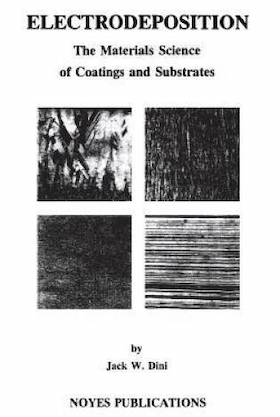
Curated with aloha by
Ted Mooney, P.E. RET

The authoritative public forum
for Metal Finishing 1989-2025

-----
Woods Nickel Strike
Q. Hello, I am looking to prepare nickel strike in ABS parts with electroless nickel coating, what concentrations can I use and what are their sources?
Susan HernandezIng. Jr - Mexicali, B.C. Mexico
September 20, 2023
privately respond to this RFQ
Ed. note: As always, gentle readers: technical replies in public and commercial replies in private please (huh? why?)
A. Hi Susan. More words would clarify exactly what you are trying to do, but Wood's Nickel is a fairly good way of activating electroless nickel plating, although it was actually designed for activating stainless steel. Topic 36223, "Plating nickel on nickel" suggests alternatives like a cathodic cyanide strike.
The formulation for Wood's Nickel is on this page, and it's one of those rare situations where generic chemistry is usually used rather than a proprietary.
Luck & Regards,

Ted Mooney, P.E. RET
Striving to live Aloha
finishing.com - Pine Beach, New Jersey
⇩ Related postings, oldest first ⇩
Q. Is there actually a specification for Woods Nickel strike. We use it as a starter some times before electroless nickel and before cadmium plate. But is there actually a spec that tells the recommended thickness and process?
Any information on this subject would be greatly appreciated.
Keith B. Dodds- Tempe Arizona
1998
A. Look in 6 reference books and you will find at least 4 different answers.
The true answer to the formula is, it depends.
Difficult to activate stainless like Hastelloy probably works better with a higher HCl concentration. Pussycat SS like 410 probably will work better with a lower HCl.
Thickness is a dealers choice. When you can see definite color, you have enough thickness to plate over very well.
Whatever works best for you, is the proper choice.
James Watts- Navarre, Florida
by Jack Dini

on eBay or
AbeBooks
or Amazon
(affil links)
A. Hi Keith. Although James is right about variations, I'd go with 240 g/l NiCl and 125 ml/l hydrochloric acid for the simple reason that it's the formula Jack Dini quotes in "Electrodeposition", and I consider that book to be the most authoritative reference on the subject because it includes actual tests of adhesion values for varying current densities, pretreatments, etc. Good luck.
Regards,

Ted Mooney, P.E.
Striving to live Aloha
finishing.com - Pine Beach, New Jersey
Q. We silver plate 12% chromium steel and use a Woods nickel strike as part of the process with the following parameters: Hydrochloric Acid: 25-40 g/l Nickel Chloride hexahydrate: 300-400g/l
Is this a reasonable set of parameters for such a metal or should the Hydrochloric acid value be much higher to give a solution of low efficiency and improve adhesion?
Nigel D Gill, B.Sc.MIMF AIEMA- Blantyre, South Lanarkshire, Scotland
2004
A. We plate up to 28% Cr steels using the woods nickel strike, however we do run the HCl concentration higher than yours, typically 80 to 120 gpl, whilst we've found that for say 13% Cr down to 60 gpl is ok as we have a variable mix of 13% to 28% Cr we run the bath at the higher concentrations, Ni Cl2 we tend to run as low as practical to minimise dragout say 120 gpl, but the concentration will tend to rise in use.We let it rise, then fall as we bail out to maintain the acid concentration. Haven't added Ni Cl2 for years.
Regards,
Richard Guise- Lowestoft, U.K.
A. I agree with Richard, 120 g/l NiCl2 is fine but it increases with time and you have to bail it out. 8-10% HCl is good.
8-10 % HCl, I mean from the 32% HCl commercial which is actually only 3% out of the theoretical 100% HCl.

Sara Michaeli
Tel-Aviv-Yafo, Israel
Q. I need some help to get a nickel strike bath solution started I don't have a a big tank but the size is 17" x 2' x 3'. Can anyone help me to see what kinds of liquids I will need and what % I will need to have to mix up and start my bath. Thank you for your responds.
DAVID LIMON- Oxnard, California, USA
September 25, 2013
A. 2#/gal Nickel Chloride, 2 quarts/gal HCl, Rolled Depolarized anodes, bagged. Take out the anodes when not in use to prevent metal increase.

Robert H Probert
Robert H Probert Technical Services
Garner, North Carolina

Q, A, or Comment on THIS thread -or- Start a NEW Thread
Disclaimer: It's not possible to fully diagnose a finishing problem or the hazards of an operation via these pages. All information presented is for general reference and does not represent a professional opinion nor the policy of an author's employer. The internet is largely anonymous & unvetted; some names may be fictitious and some recommendations might be harmful.
If you are seeking a product or service related to metal finishing, please check these Directories:
Finishing
Jobshops
Capital
Equipment
Chemicals &
Consumables
Consult'g,
& Software
About/Contact - Privacy Policy - ©1995-2025 finishing.com, Pine Beach, New Jersey, USA - about "affil links"